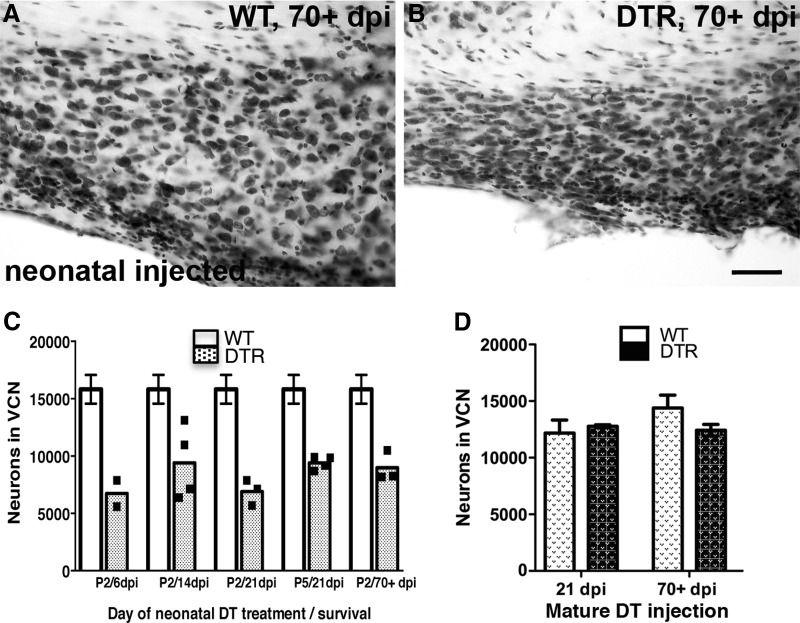Figure 11.
Critical period of neuronal vulnerability in the CN after hair cell loss. A, Neurons in the ventral CN of WT remain intact at 70+ d after neonatal (P2) injection of DT. B, DTR mice injected as neonates are vulnerable to neuronal loss in the ventral CN. Scale bar, 50 μm. C, Neuron counts in VCN of DTR mice injected with DT at P2 and allowed to survive for varying time intervals compared with the mean and SEM of all DTR injected WT mice. A one-way ANOVA comparing all the WT groups did not approach statistical significance (p > 0.26). The data from these 12 animals were used to provide a more accurate predictor of the normal cell numbers and that mean (±1 SEM) is shown as the open bars. The shaded bars show the mean and individual counts for 3–4 DTR DT-injected animals at each survival time. Neonatal CN neurons are very sensitive to the selective loss of hair cells compared with age-matched WT mice. Dramatic and significant neuron loss occurred as early as 6 dpi (C) and persisted for as long as 70+ dpi. Significant differences between WT and DTR mice injected with DT overall were seen (two-way ANOVA; p < 0.0001) and were maintained at every time point (Bonferroni post hoc tests; all p < 0.01); no significant interaction was seen. Neuronal loss begins as early as 6 dpi in DTR mice injected as neonates and persists for at least 70 dpi. D, Dramatic neuronal loss is not evident in DTR mice injected as adults despite complete hair cell loss in the cochlea, even at 70+ dpi. Data are mean ± SEM, n = 2–5. Two-way ANOVA failed to show any significant effects, although the small difference seen at the long survival time may warrant further study.

